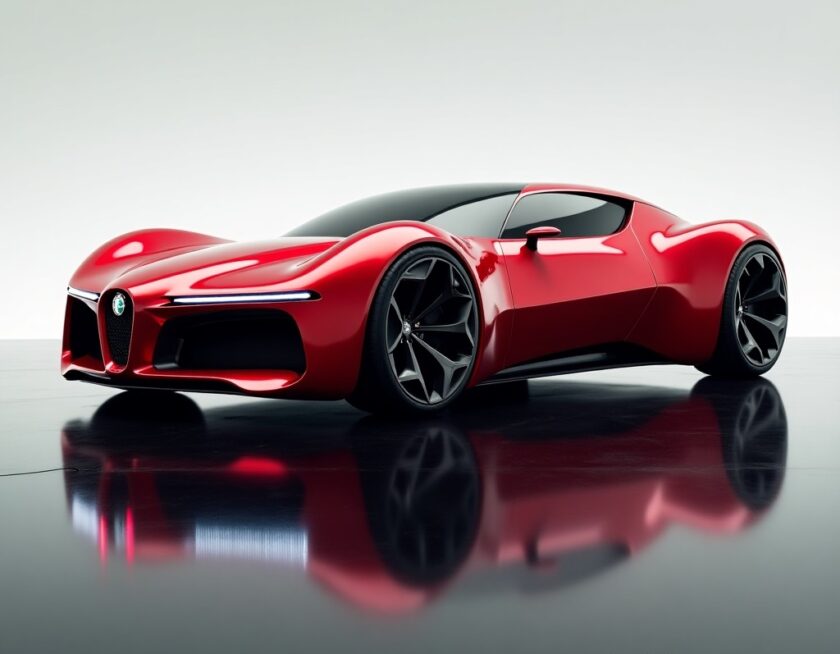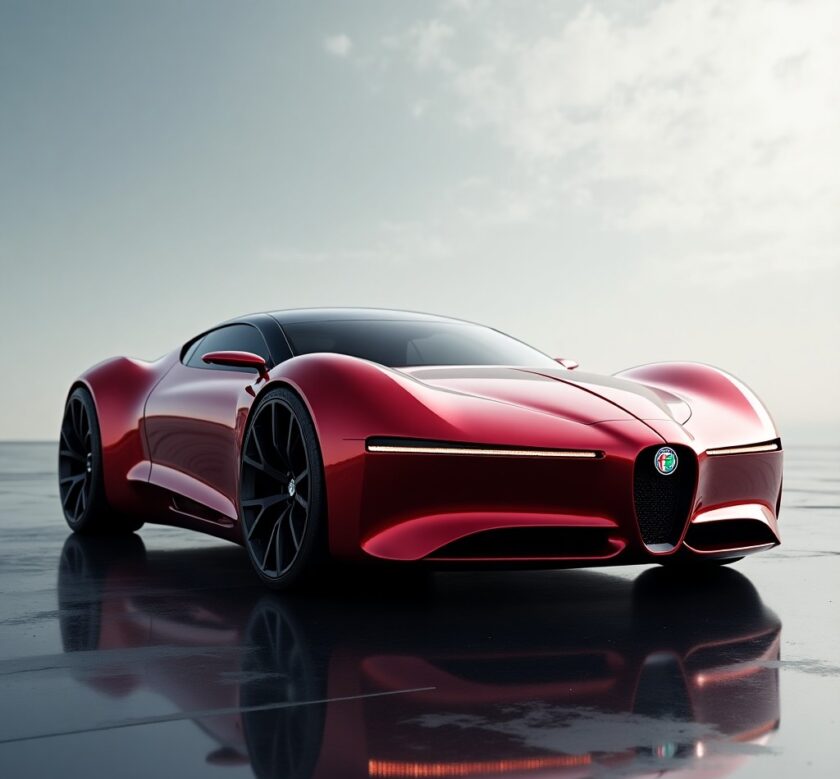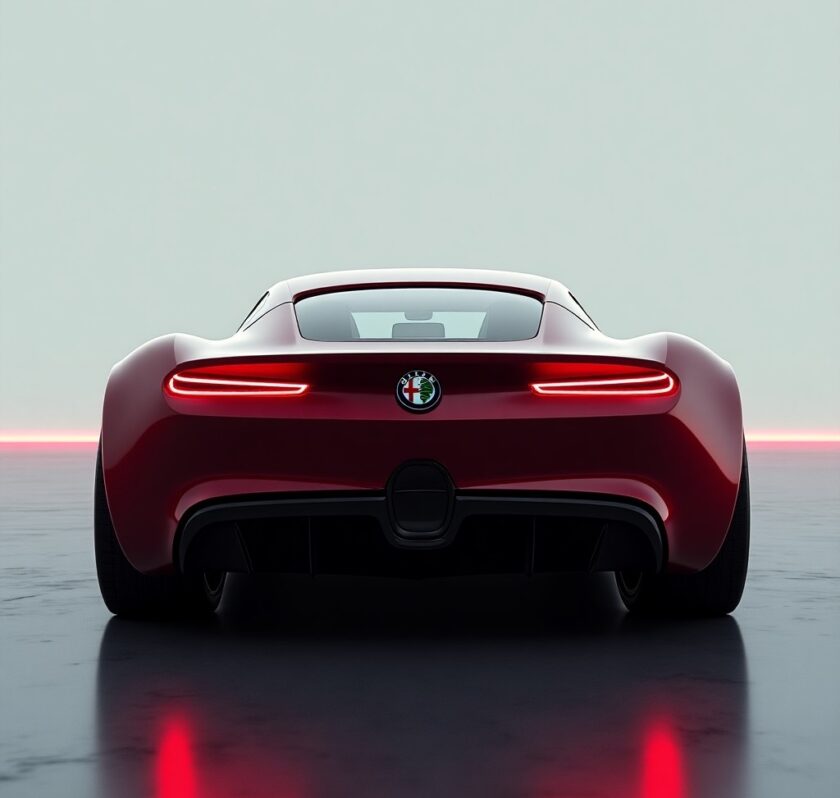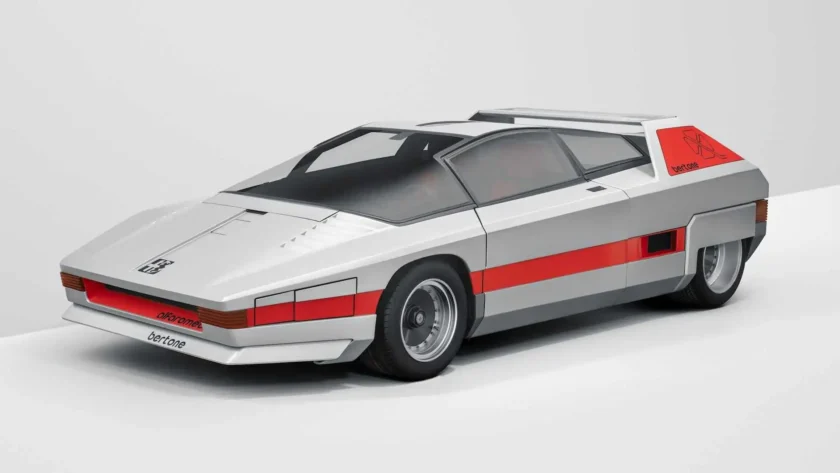
In 1976, at the Geneva Motor Show, the Alfa Romeo Navajo made its debut as one of the most futuristic creations by Bertone. This was an era when Italian design studios were experimenting with wedge-shaped forms inspired by aerospace technology, and the Navajo became the pinnacle of this trend.
The Navajo project was born as a continuation of the collaboration between Alfa Romeo and Bertone, who had already produced avant-garde concepts such as the Carabo (1968) and Montreal (1970). The base for the Navajo was the legendary Alfa Romeo 33 Stradale, one of the most exquisite supercars of its time.
Bertone’s goal was not just to create a beautiful car but to showcase how the Alfa Romeo of the future might look. Marcello Gandini, Bertone’s chief designer, envisioned something resembling a spacecraft in his early sketches, and the team brought this concept to life.
The Navajo featured an extremely wedge-shaped body with sharp lines and a large rear wing that wasn’t just decorative but had an active aerodynamic function. In profile, the car looked like a futuristic racing machine straight out of science fiction. The headlights were hidden behind tinted panels, and the doors opened vertically in a guillotine-style, much like the Lamborghini Countach.
The interior was another bold statement. The dashboard included digital elements, which was groundbreaking for the 1970s. The cockpit was minimalist and driver-focused, with a square-shaped steering wheel.
The main creative force behind the design was Marcello Gandini, who was already experimenting with geometric shapes. The Navajo became one of his last radical concepts at Bertone before moving to Lamborghini, where he created the Countach.
The concept never went into production, but its influence is visible in many 1980s cars, such as the Ferrari Testarossa and Lancia Sibilo. Bertone demonstrated that the future could be not only fast but also visually striking.
Read too: The Story of Honda S2000: A legend born for driving enthusiasts
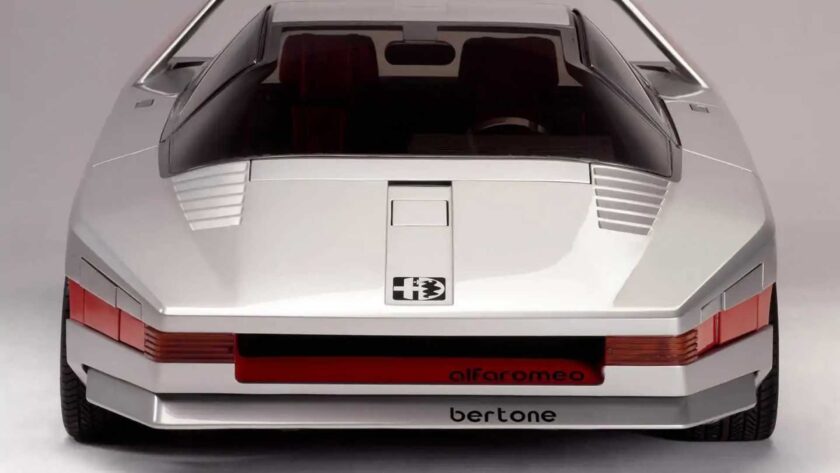
Specifications of the Alfa Romeo Navajo (1976): 1. Power – 230 hp 2. Acceleration – 0-100 km/h in approximately 5.6 sec 3. Top Speed – 260 km/h 4. Engine – 2.0-liter naturally aspirated V8 5. Range – Not specified, as it is a concept car 6. Dimensions – Length: 3,970 mm, Width: 1,850 mm, Height: 940 mm 7. Technology – Active aerodynamic rear wing, digital dashboard, unique door system 8. Additional Features – Lightweight body materials, integrated cooling system.
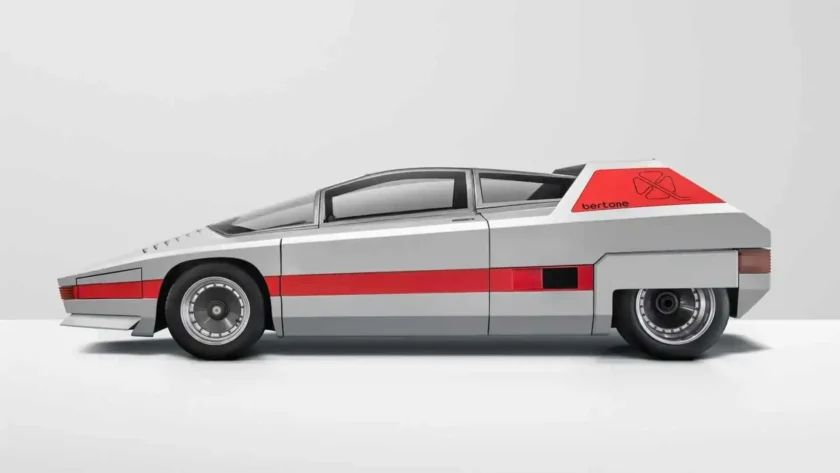
5 Fascinating Facts About the Alfa Romeo Navajo
- A Car Inspired by NASA’s Space Shuttle
When Bertone designed the Navajo, the world was captivated by space exploration. NASA was preparing to launch its first space shuttle, and futuristic aesthetics were everywhere. The smooth, aerodynamic surfaces and massive rear wing of the Navajo weren’t just for show—they were directly influenced by spacecraft design. Bertone imagined a car that looked like it could belong on the Moon rather than on the streets of Milan. - One of the Lowest Concept Cars Ever Built
The Navajo’s height was only 940 mm (37 inches)—that’s lower than a Lamborghini Countach! For comparison, most modern supercars stand well over a meter tall. Sitting inside must have felt like piloting a jet fighter, with the road practically at eye level. The extreme wedge shape wasn’t just for looks—it helped the car slice through the air like a bullet. - A Digital Dashboard in 1976? Absolutely!
While most cars in the 1970s had analog dials and mechanical gauges, the Navajo featured a digital instrument panel, something that wouldn’t become common until decades later. This was pure science fiction at the time—only the most high-tech aircraft had such displays. Alfa Romeo and Bertone were proving that the future of driving was closer than people thought. - It Was Actually Tested on Alfa Romeo’s Track
Many concept cars are just design studies—built to impress but never meant to drive. Not the Navajo. Alfa Romeo took it to their test track, where it roared to life with its 2.0-liter V8 engine producing 230 horsepower. Weighing just 870 kg (1,918 lbs), the car was quick and agile. If it had ever reached production, it might have been one of the fastest cars of its time. - It Survived Bertone’s Bankruptcy
In 2014, the legendary Bertone design house went bankrupt, and many of their historic concept cars were sold at auction. But the Navajo escaped that fate. Instead of ending up in a private collection, hidden from the world, it remained safe in the Museo Storico Alfa Romeo in Arese, Italy. Today, it’s one of the rarest and most mysterious Alfa Romeo prototypes still in existence.
Read too: New Citroën SM 2025: The legendary grand tourer reimagined for a new era
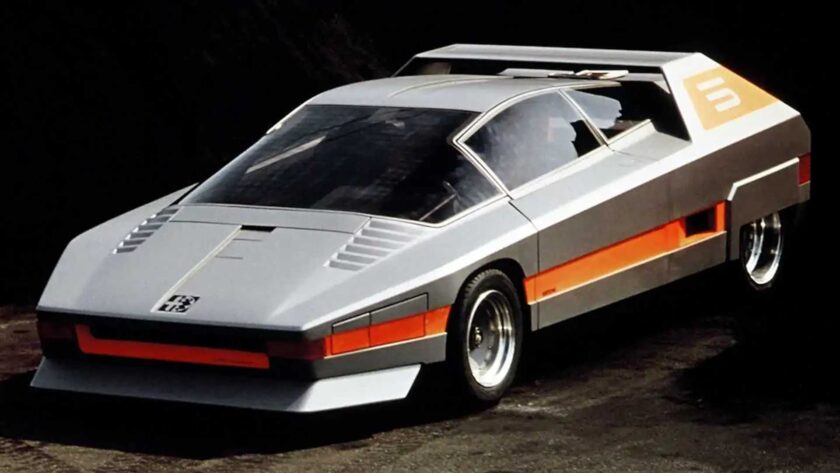
Alfa Romeo has always been known for its innovative approach to automotive design, and the company’s concept cars played a crucial role in the evolution of both Italian automotive production and the global car industry. One of the most striking examples of this is the Alfa Romeo Navajo from 1976, which marked the pinnacle of the brand’s concept car development in the 1970s. However, before this futuristic vehicle appeared, Alfa Romeo and the Bertone design studio had already created other fascinating concept cars that paved the way for the future of supercars.
Read too: Oldsmobile Aerotech: The concept that redefined automotive innovation
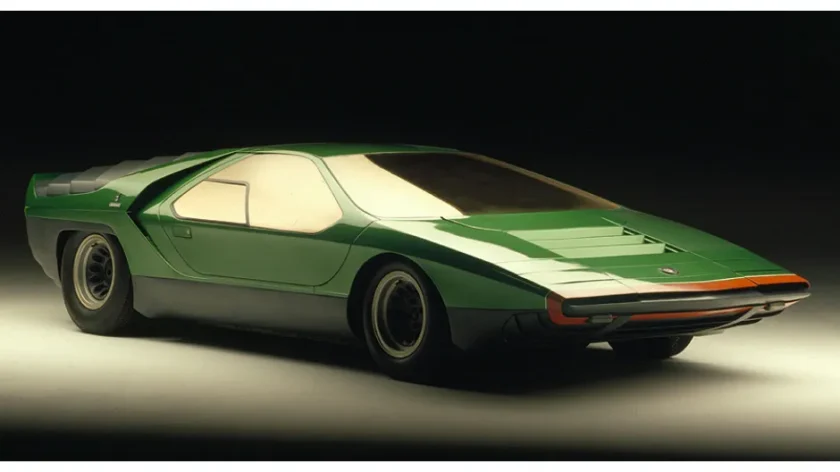
The first major step in this journey was the Alfa Romeo Carabo (1968), which amazed the world with its unconventional design and revolutionary aerodynamic solutions. The car was low-slung, with impressive streamlined shapes that resembled aerospace technology. It was the first car to feature active aerodynamic elements, making it highly efficient on the road.
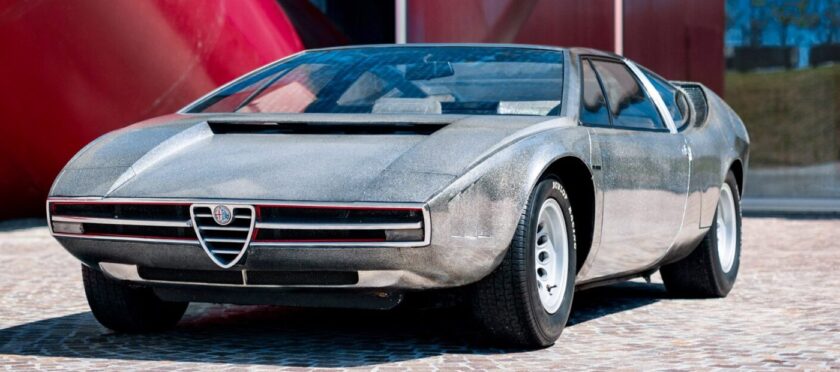
The next concept, the Iguana (1969), continued the search for new design solutions and introduced even smoother, rounder forms. This car marked an important stage on the way to the Navajo.
The Alfa Romeo Navajo of 1976 was the culmination of these efforts. With its extremely low profile, aerodynamic lines, and impressive technology, this concept car looked like a vehicle from the distant future. Additionally, the Navajo was the first car to feature a digital dashboard, further emphasizing its futuristic design. With each new concept, from the Carabo to the Navajo, Alfa Romeo and Bertone demonstrated their ability to make bold design choices and technological innovations, which ultimately shaped the development of supercars in the 1980s. Even now, looking back at these concepts, we realize that the Navajo anticipated many of the features that would later become standards in the design of sports cars. It undoubtedly became one of the symbols of avant-garde in the automotive world.
Read too: Mazda Autozam AZ-1: The Japanese phenomenon of the 90s
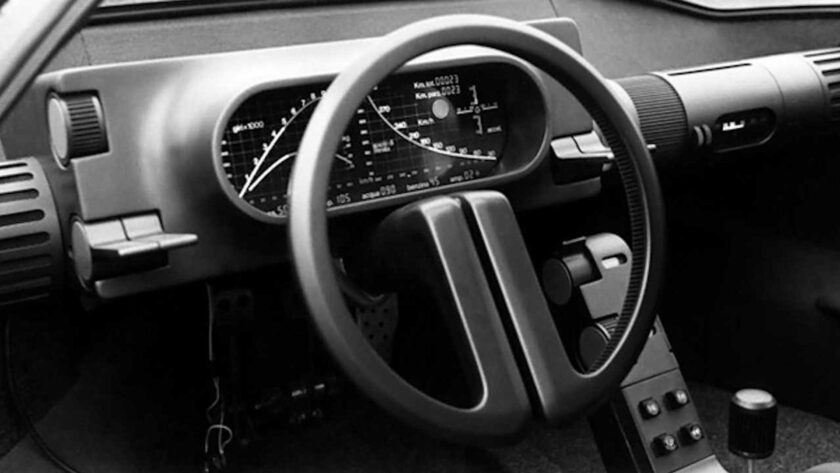
Conclusion:
The Alfa Romeo Navajo, although it remained just a concept, was a striking example of the bold approach to automotive design in the 1970s. This car combined innovative technologies with a futuristic look, ahead of its time, becoming a true symbol of progressive ideas in Italian engineering. With its aerodynamic style, technological innovations, and avant-garde interior design, the Navajo not only pushed the development of concept cars but also influenced the future look of production models.
Perhaps the greatest value of the Navajo lies in the fact that this concept became not just an idea for a future car, but a significant step in the overall evolution of automotive culture. Its creators proved that even the most ambitious and impractical ideas could inspire future generations of designers, engineers, and manufacturers.
The Alfa Romeo Navajo leaves us with the thought of what a car was and what it could become in the future. It marked a moment when cars were no longer just a means of transportation but expressions of technological progress, aesthetics, and cultural trends. And although the Navajo never reached mass production, its legacy in the automotive world is immense, and it will undoubtedly remain in history as one of the most impressive concept cars ever created.
Read too: Mazda R360 2025: The return of a Japanese icon
New version of Alfa romeo Navajo by AI:
Future Classics: 9/10
Brand Recognition: 7/10
Design Modernity: 10/10
CarsCorn Score: 8.7/10

